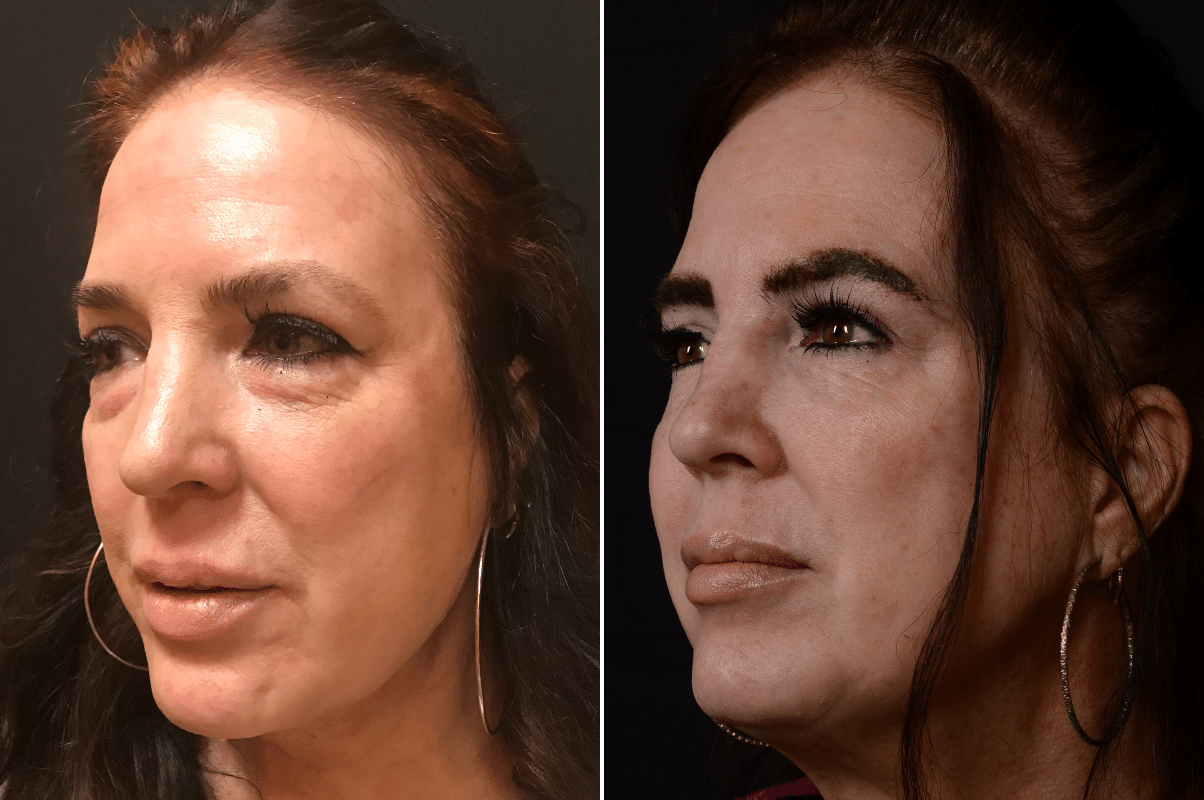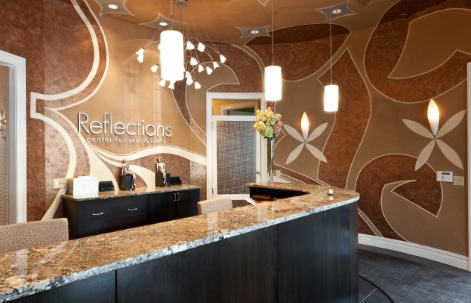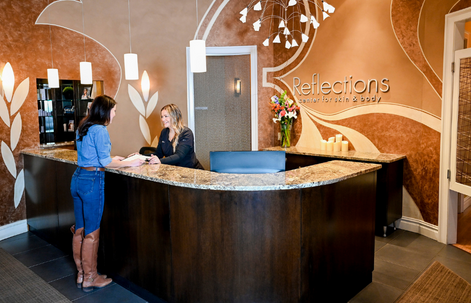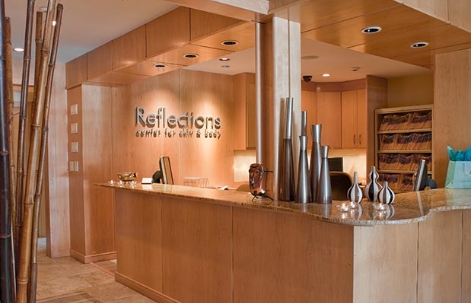At Reflections, we focus on natural-looking results – and nowhere is this more important or more difficult to achieve than for the undereye. This area is incredibly complex not only in the cosmetics of the result but also in the functionality of the eyelid. So, it’s really critical that you chose a doctor who is experienced, skillful, and creates consistently excellent results for any under-eye surgery.
On this page, you’ll find all the information you need to start to outline which procedures are right for you (your anatomy, lifestyle, budget, preferences, etc.) and how to compare and vet the doctors you’re considering so you can choose the plastic surgeon or cosmetic physician who’s best for your under eye surgery – and the “right one” isn’t necessarily the same for everyone.
Lower Blepharoplasty Quick Facts
- Performed under general anesthesia or local anesthesia
- A board-certified plastic surgeon with over 20 years of experience
- $5,500 – $10,000 (plus an additional cost for anesthesiologist and surgery center, usually around $3,000)
Types of Lower Blepharoplasty Surgery
Depending on your unique facial anatomy and other factors, one or all of these techniques may be used in your lower blepharoplasty surgery. Whether the cause of your under-eye concerns is aging-related, or simply a feature you’ve always had and wish to change, the same techniques are used to achieve the end result.
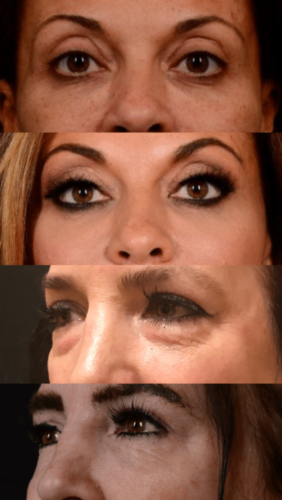
Lower Eyelid Skin Pinch
The skin pinch technique allows your surgeon to remove excess or loose skin from the eyelid without disturbing the tissue underneath, including fat or muscle. During this procedure, the skin is freed up along the lash line, excess skin is removed, and the incision line is hidden along the eyelash line for a very discreet and natural-looking result.
This is the ideal procedure for those who have been Botox-ing away wrinkles under their eyes for years and are no longer seeing much of a result, or for whom ThermiSmooth or Ulthera did not create enough of a result — or for those who simply prefer the minimal maintenance and impressive results of a surgical procedure over other non-surgical options.
If you have loose skin and bulging fat pads, this procedure is often performed after fat pad repositioning in the same surgery. You want to perform the excess skin removal after the fat pad alterations because that may impact the way the skin drapes over this area. So if you have both of these issues, the important thing not to do is to not have a skin pinch done by a surgeon who isn’t also first addressing the fat pad layer below because that can really lead to a bad result and more complicated revisions later.
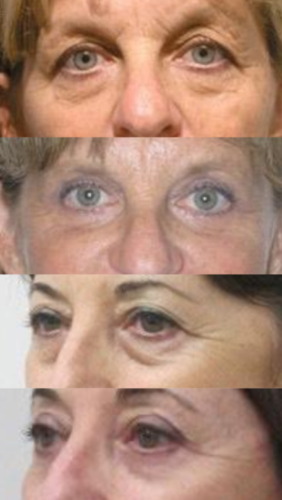
Dealing With Fat (Or Lack Thereof) Under The Eyes: Hollowness vs Puffiness
People generally experience one of two symptoms with fat under the eyes:
- There is a lack of fat, which creates an indentation that deepens over time and will often continue down the cheek in one deep continuous indented groove.
- The fat under the eye almost appears to swell or become really puffy – this is sometimes after a time where that patient was hollow under the eye.

View More Lower Blepharoplasty Before & Afters
More Before & Afters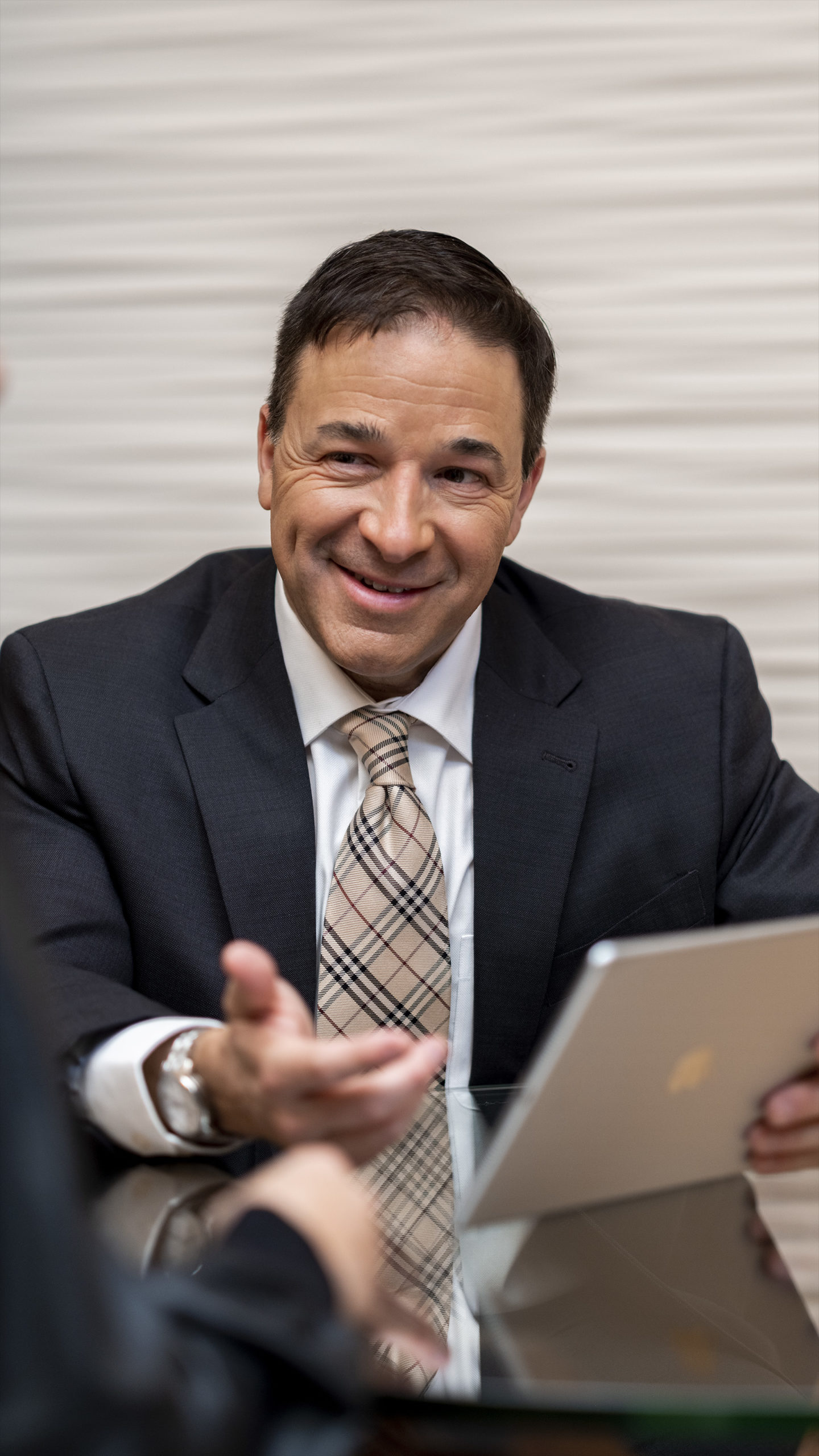

Why Choose Reflections Center For Lower Blepharoplasty Surgery
The Reflections Center team is dedicated to reaching your best results and understanding that surgery is not always the ideal option for each patient. We won’t push you towards surgery if it’s not the right choice for you personally and always factor your anatomy, health, and lifestyle into that decision.
We also value honest assessment of each patient’s concerns and won’t lie to you and say that filler or other nonsurgical treatments will lead to results when this is not possible. Surgery is sometimes a patient’s best and only option to truly address their concerns. When this is the right choice for you, you can put your trust in Reflection Center’s board-certified plastic surgeon, Dr. Joe Fodero.
When to Choose Lower Eyelid Surgery
Lower eyelid surgery is a highly specific procedure when performed on its own, but can be incredibly helpful in restoring a more youthful, alert expression for people who exclusively have moderate to severe under-eye sagging or excess skin or fat. Other non-surgical options exist to help gently lift the skin under and around the eyes, or eyelid surgery of some kind might be recommended in addition to further rejuvenation with a brow lift or facelift.
Treatments That Complement Lower Blepharoplasty
Many patients will find that their lower eyelids age more quickly (or rather that the signs of aging are more readily apparent here) than the rest of their face. Some patients will be able to delay lower eyelid surgery by first having nonsurgical treatments in their 30s, 40s, and even 50s, which typically includes lasers, fillers, or fat transfer.
When you are ready for lower eyelid surgery, you should consider how to maximize your results for now and in the future with this plastic surgery. We often recommend combining a few procedures to not only extend the longevity and durability of your result, but because there are economies of scale in regards to total costs that make doing a few things together make more financial sense – and because this often allows for a more natural result by ensuring each part of you reflects the same age.
-
Fat Transfer for Face
Fat transfer is often used to reduce hollowness around the eyes and create smooth, youthful transitions between the eyes and cheek, temples, etc.
-
Brow Lifting Treatments
Very commonly, by the time you're ready for lower eyelid surgery, there is a need for either the brow and/or the upper eyelid to be lifted. When we're lifting the brow, it doesn't have to be surgical. Learn more about your options.
-
Upper Eyelid Lift Surgery
Upper eyelid surgery is far less involved in terms of recovery and intensity of the surgery, making it an easy thing to add on to this surgery. You'll save yourself money in the long-run by combining these 2 procedures into 1 session with your surgeon.
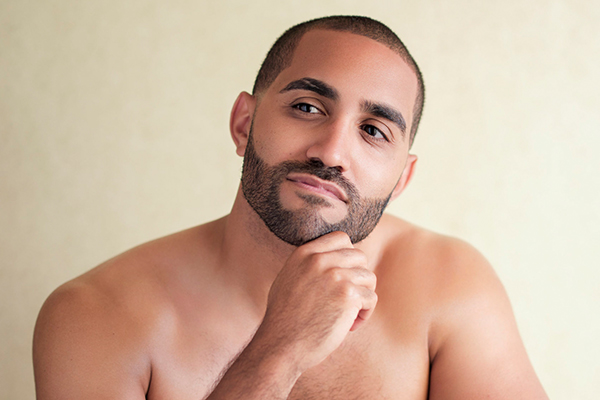
Blog
15 Most Popular Treatments for Men
For many years men sat idle, wishing they could do things to improve their...
Read More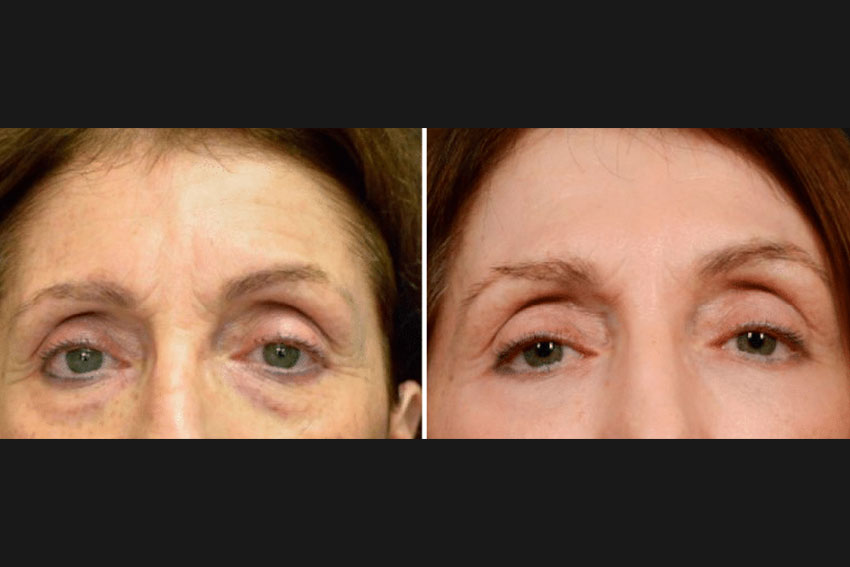
Blog
Fractional CO2 instead of Blepharoplasty?
Cosmetic Surgery Times reports that Fractional CO2 laser treatment is an...
Read More
Blog
Study: Baby Boomers Love Their Cosmetic Surgery
Just because you act your age it doesn’t mean you have to look it....
Read MoreFrequently Asked Questions About Lower Blepharoplasty
- What is lower blepharoplasty?
Lower eyelid surgery, or lower blepharoplasty, is any surgery that’s performed on the lower eyelid. In our practice, these types of surgery are used to reverse the signs of aging or to correct abnormal or unattractive undereye features.
- What does blepharoplasty recovery look like?
After your lower blepharoplasty, you can expect some swelling, bruising, and dry eyes. Cold compresses and ice packs can help to alleviate swelling and may be used during the first two days after the procedure. Your surgeon will likely prescribe pain medication for your initial days of the recovery period as well as ointments and eye drops. Patients should also wear darkly tinted sunglasses during the healing process to protect the skin of the eyelids as you heal.
You can expect to return to most normal activities within a week, except for vigorous workouts (think Crossfit, not a walk in the neighborhood) which need to wait for at least 2 weeks or until you are cleared by your plastic surgeon. A majority of bruising and swelling dissipate within two weeks after the procedure.
- Who should consider lower eyelid surgery instead of a nonsurgical treatment?
Many times, patients will come to us and say “I just don’t want to have surgery” and that’s a very valid choice to make, but your feelings about whether you want to have surgery or not are not the only factors that should be considered when deciding whether or not to have surgery. Did you know that nonsurgical treatments generally accomplish different results or work for a different subset of people than surgical procedures?
- Is lower eyelid surgery performed under general or local anesthesia?
Lower eyelid surgery can be performed under either general or local anesthesia. Reflections Center prefers to limit general anesthesia use, but it is necessary in cases where there is more extensive treatment to the muscle, fascia, or fat pads around the eye. Generally, a simple skin pinch procedure or microfat transfer can be performed under local anesthesia. Your consultation will include not only a discussion of your anesthesia preferences but a frank discussion of your health and well-being in relation to anesthesia choices. Your health is our first priority.
- How much is a blepharoplasty?
The cost of lower eyelid surgery varies from patient-to-patient depending on factors including the type of anesthesia used, the techniques used during your procedure, and the extent of correction necessary. Generally speaking, the cost of a lower eyelid surgery starts at about $5,500.
Financing Your Surgery
At Reflections Center, financing is accepted for any procedure over $1,000, including lower blepharoplasty. We partner with Prosper Healthcare Financing and Care Credit, and patients can apply for financing in advance before their appointment. You may read more about your financing options here.
- Can upper and lower eyelid surgery be done at the same time?
Yes, upper and lower eyelid surgery can be performed in a single surgical session. This is one of our most common combinations of treatments.
- What does blepharoplasty not treat?
One thing most patients don’t realize is that surgery will not improve skin quality, thickness, or texture – even though it will fix skin laxity (or excess skin). This is especially important for the lower eyelids, where pulling tight skin that is already very thin, delicate, and crepey will create a bad result. Since nearly everyone experiences thinning and loss of elasticity in their undereye skin, this is an important factor to consider.
When skin has lost its elasticity and you stretch it tight (remove all the excess skin), the skin once healed will continue to stretch out over time and become thinner and thinner. This is why we almost always recommend both a treatment to improve skin quality in addition to surgery. Most patients have these treatments performed during their surgery session, so it doesn’t have to feel like it’s another procedure and another recovery period. Here you can learn more about improving skin quality and elasticity for the under eyes.
- How long after lower blepharoplasty can I wear makeup?
Patients are allowed to begin wearing makeup the day after surgery, but they must be careful to avoid applying that makeup in their incisions.
For example, with any surgery performed on the eyes, it’s quite common to have some bruising. There are so many tiny blood vessels in these areas that it’s really impossible to avoid them all, and most patients will have at least light yellow bruising that appears in the first few days. This bruising tends to be on the upper cheek and lower eyelid junction area – and that’s usually an inch or two below where the incisions are. Some patients cover this with large sunglasses (others want to use makeup) and that is perfectly fine. You just want to avoid makeup above the eye that could fall down into the incision line, so avoid placing makeup too close up to those incision lines.

Dr. Joe Fodero is a board-certified plastic surgeon with over 20 years of experience. For 20 years, Dr. Fodero has built an amazing resume of plastic surgery work in the New Jersey area and is recognized as a Top Plastic Surgeon in Rhinoplasty, Breast Augmentation, and Body Sculpting. We’re so happy he’s decided to join forces with the Reflections Center team of physicians.







